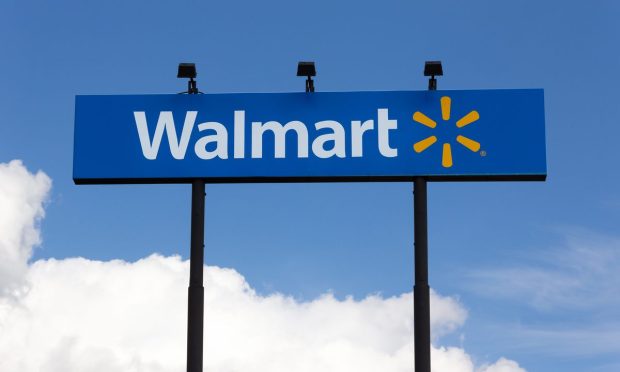Walmart Says ‘Business Is Increasingly Digital,’ Pledges Further Investment in Tech

It’s been said that “change is the only constant,” and that axiom is as true for the retail industry as it is for Walmart — the operator of over 10,000 stores worldwide and a fast-growing eCommerce business.
As the company announced its fourth-quarter and full-year results, its ongoing omnichannel transformation can be seen throughout its trailing results, as well as where it’s headed and investing for the future.
On paper, the Arkansas-based giant can show record company-wide revenues for the year, as well as for the U.S. unit for the quarter, at $572 billion and $105 billion respectively, but behind the scenes, as CEO Doug McMillon often says, the Walmart of today bears little resemblance to Walmart he started working at when he was a teenager.
“The business model is changing. I think that’s the headline. We’ve got a business that is becoming increasingly digital, the eCommerce business, first party, third party, is growing and it gives us the opportunity to grow things like advertising income,” McMillon told analysts and investors on the company’s earnings call Thursday (Feb. 17).
Top 10 Ambitions
Speaking of advertising — or Walmart Connect — this relatively new venture has grown into a $2 billion contributor for the company, and is pegged to play an even bigger role going forward.
“We continue to make strong progress and some of our newer higher margin initiatives,” CFO Brett Biggs said, noting the unit’s robust sales growth this year as well as its strong pipeline of new advertisers offering large growth opportunities ahead.
“In fact, the number of active advertisers using Walmart connect grew more than 130% year over year, and about half of the ad sales came from automated channels in Q4 — more than double last year,” Biggs added. “We expect Walmart Connect to continue to scale over the next few years with plans to become a Top 10 ad business in the midterm.”
While ad sales are growing rapidly, McMillon, Biggs and Walmart U.S. CEO John Furner all stressed the fact on the call that this burgeoning business is a reflection of the company’s growing omnichannel offering.
“Growing the eCommerce marketplace and [Walmart Fulfillment Service] have been a priority over the past couple of years as we’ve invested to expand fulfillment capacity, introduce new services for sellers, and double the number of items available for customers,” Biggs said, adding that Walmart expects to have over 200 million items available online by the end of the year.
Numbers Matter
Although Walmart was happy to report Q4 net sales growth of 7.6% and adjusted earnings growth of 9.3% — which exclude its divestitures in Japan and the U.K. — it was not prepared to detail the latest subscriber numbers for its Walmart+ service.
“I really don’t want to have the company defined by one metric,” McMillon said in response to a question about subscription levels. “Walmart+ is important. It helps us grow our eCommerce business. It helps us deepen the relationship with customers and to have more data and at some point we’ll probably talk about that number.”
As Walmart’s omnichannel transformation plays out, McMillon pointed out that there will be times when eCommerce grows faster than stores, and — as has been the case lately — periods of time when stores are attractive.
In addition, Walmsrt said high single-digit increases in food costs had, per Nielsen data, increased its grocery market share by an unspecified amount, alongside additional Q4 strength in the health and wellness, apparel, seasonal and automotive categories.
“Our company is about 17% larger in terms of revenue and 31% larger in terms of operating income, and globally, our percentage of digital sales grew from 6% to 13%,” McMillon said, helped in part by the addition of over 20,000 new sellers on its platform in the US last year — with 40,000 more expected to join this year.
A Deeper Digital Dive
As a result, Walmart’s gross merchandise value (GMV) delivered by its fulfillment services jumped by 500% last year, and the increasingly digital retailer expect the “robust growth will continue this year,” McMillon said, as the company adds more capacity via a capital expenditure commitment close to 3% of sales, or approximately $17 billion.
In addition, its newly launched last-mile delivery service, Walmart Go Local, is also starting to scale, via its Spark Driver platform which handles home delivery for retailers ranging from Main Street “Mom and Pops” to Home Depot. McMillon said the company currently has nearly 1,000 pickup points and plans to grow that to 5,000 by year’s end.
“This is good for customers, our clients and for us as we lower the cost per order by increasing the combined order size and the route density,” the CEO said.
Ultimately it’s all about bringing more customers, sellers and suppliers into Walmart’s ecosystem in order to monetize those relationships — whether that’s through ad sales, financial service products, healthcare or food.
For the new omnichannel Walmart, McMillon said prioritizing customer convenience is critical.
“Our stores have become hybrid. They’re both stores and fulfillment centers,” he said, noting a 170% increase in the number of orders coming from our stores last year — on top of more than 500% from the year before.
“Having inventory so close to so many customers is a competitive advantage,” McMillon said.
